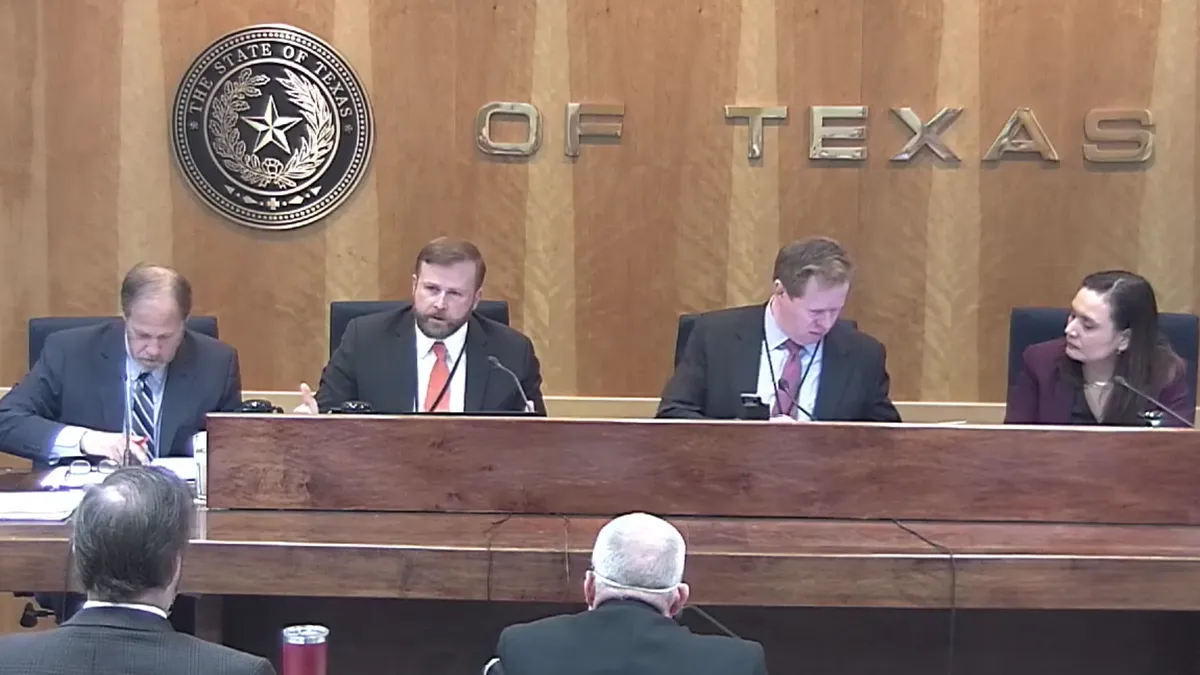Dive Brief:
- The Public Utility Commission of Texas will consider standardizing the distribution system interconnection process for storage and distributed energy resources, in an effort to bring more clean resources onto the grid, increase the system's reliability and ultimately count DERs towards the resources required to ensure reliability.
- The commission has good visibility into utility-scale projects connecting to the transmission system managed by the Electric Reliability Council of Texas but "it is unknown how many megawatts of battery storage are seeking to interconnect to the distribution systems across ERCOT's utilities, municipal utilities and electric cooperatives," Commissioner Jimmy Glotfelty noted in a Wednesday memo.
- The PUCT plans to examine "appropriate" timelines for the distribution interconnection process, the treatment of interconnection costs for energy storage interconnected at distribution voltage, whether storage resources should be subject to wholesale distribution service tariffs, and other issues.
Dive Insight:
The PUCT developed standardized transmission interconnection procedures for ERCOT in the mid 90s, as the state deregulated its wholesale power market.
"We have moved beyond that, as we all know, and are moving towards more interconnection of different devices at the distribution level," Glotfelty said at Thursday's open meeting of the commission. "This is just a natural progression of how this system is moving."
The commission's new project will aim to incorporate distribution interconnection modifications into the PUCT rules "over the coming months," according to Wednesday's memo.
While Glotfelty's memo specifically noted battery storage, Commissioner Will McAdams said it would fit alongside similar efforts regarding distributed generation and other distributed energy resources.
The commission wants feedback from utilities regarding best available technologies and what enhancements are needed at the distribution level "to more effectively integrate these resources in a way that allows grid operators and system operators to actually control the resources," McAdams said. The "ultimate goal" is for distributed resources to be incorporated into ERCOT's resource adequacy metrics, he said, which in turn would allow for a wider range of consumer benefits to be considered in cost allocation proceedings.
To get there, regulators need better visibility into what distribution level resources are in utility queues. The current inability to track that data is "an oversight," Glotfelty said.
Oncor Electric, the largest utility in Texas, said in a statement that it looks forward to "participating in the project and working with everyone involved on next steps." The utility did not comment on visibility issues into its interconnection queue.
There is some urgency to address the matter, commissioners agreed.
"We're ahead of the curve, before this becomes a big rush," Glotfelty said. "I think if we don't do this, we're going to solve these issues on a utility-by-utility basis, on a filing-by-filing basis.
Glotfelty and PUCT staff will work on scoping the project, including determining where it fits best into the commission's larger market redesign efforts, and then come back to the full commission with a more detailed plan.
"Consistent guidance, sooner rather than later, is always helpful to the investors and corporations. They are the ones who are going to make all this happen," PUCT Chairman Peter Lake said.
The PUCT has been working to reform the state's wholesale markets since Winter Storm Uri caused widespread blackouts in February 2021.















